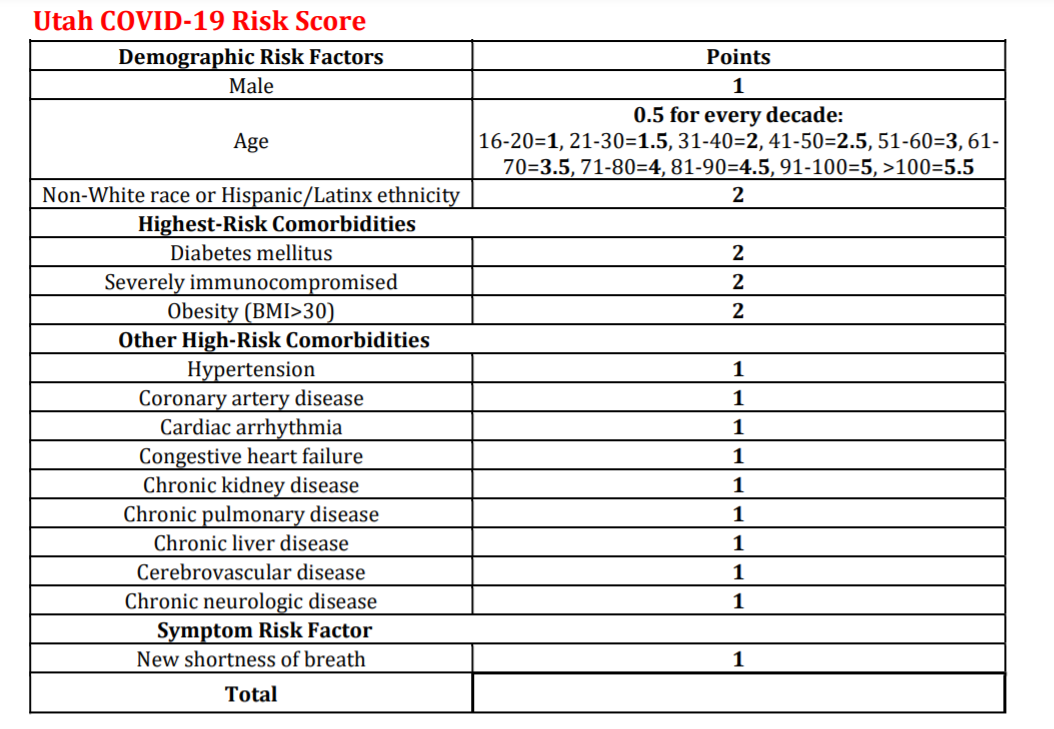UTAH, Jan. 12, 2022 (Gephardt Daily) — As the available supplies of COVID-19 treatments become more and more scarce, the Utah Department of Health is assessing new guidelines for the COVID-19 treatment risk score calculator.
The calculator is a measurement protocol used by medical personnel to help determine who is in most need of treatments based on their individual risk factors.
One of the therapeutics that is suddenly hard to find in Utah is monoclonal antibody treatment. “At this time, the number of monoclonal antibody treatments available is very limited because the medications used are in short supply across the country. You may not be able to find an appointment, even if you qualify,” according to a statement on the utahcornavirus.gov website.
The risk score calculator (see image below) for COVID-19 treatments was created in 2020 in partnership with the state’s Scarce Medications Allocation Subcommittee of the Utah Crisis Standards of Care Workgroup and is based on data and research provided by Intermountain Healthcare.
That research evaluated more than 100,000 Utahns who tested positive for COVID-19 and controlled for several variables, including age, gender, symptoms, chronic medical conditions, and geography. The research found non-white race or Hispanic/Latinx people are 35-50% more likely to be hospitalized.
Some factors automatically qualify a person for treatment (such as residence in a long-term care facility, unvaccinated pregnant women, or a severe immunocompromising condition). This is because these individuals have the highest risk of the most severe outcomes of COVID-19.
Nobody automatically qualifies for treatment based solely on their race/ethnicity, the statement says.
“For those who do not automatically qualify, the risk score was developed to include other factors proven to increase risk of hospitalization and death from COVID-19. Each factor in the risk score represents a condition or characteristic that has been shown to put a person at elevated risk for severe disease or hospitalization.”
Each risk factor is assigned a certain number of points, and a person’s total score determines if they may qualify for treatment. Currently, a person must score 10 (for a vaccinated person) or 7.5 (for an unvaccinated person) in order to qualify for treatment.
Points are assigned to factors such as sex, age, pre-existing conditions, current symptoms, and race/ethnicity. A person who is non-white or Hispanic/Latinx receives two points due to being more likely to be hospitalized based on the Intermountain Healthcare data referenced above.







